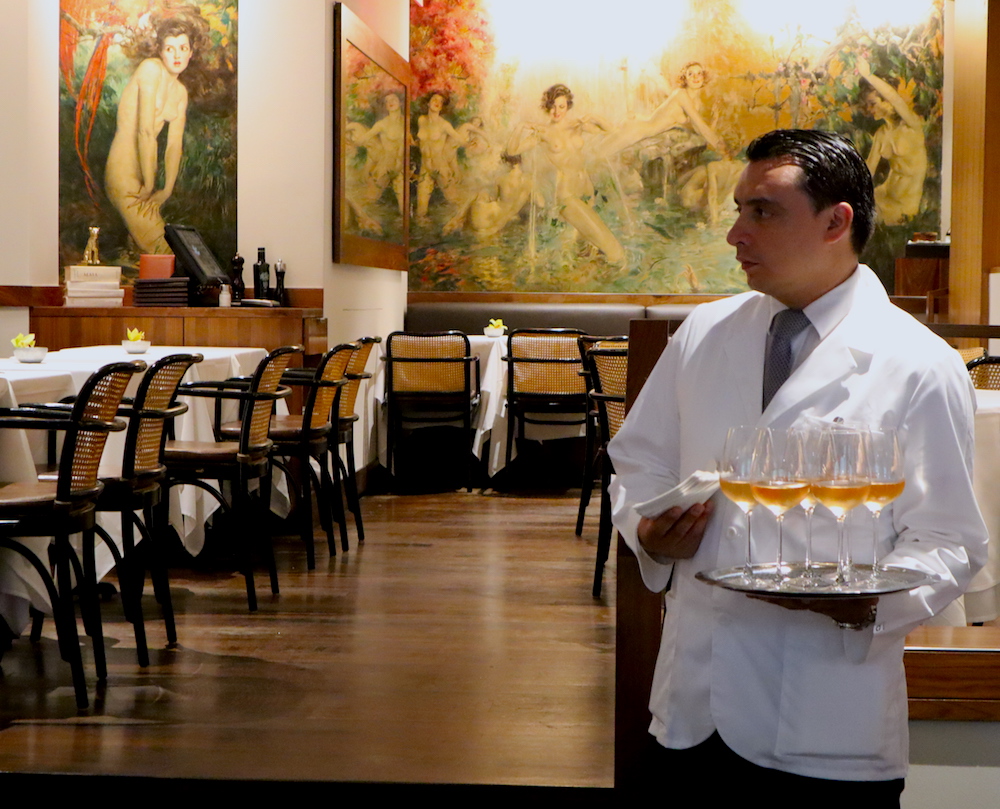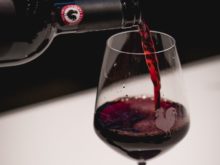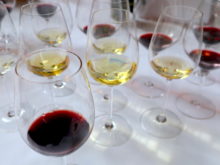
One of the most remarkable entrées ever presented to me was a salad composed of 100 flowers, which was created at the behest of Daniel Boulud by Italian chef Stefano Baiocco from Villa Feltrinelli in Gargnano—the memory of which enveloped me during a lunch in celebration of the recent collaboration between Panebianco and Colavita.
Held at The Leopard at des Artistes, home to the somewhat scandalous wood nymph paintings and panels by Howard Chandler Christy whose “Christy Girl” redefined American female portraiture, the celebratory lunch was hosted by the scions of Colavita USA, cousins Giovanni Colavita and Paolo Colavita, alongside Nunzio Castaldo, CEO of Panebianco.

In speaking about his passion for the Panebianco portfolio of Italian wines, Castaldo shared the story of the vineyards of Count Loredan Gasparini. Described by the 16th-century historian Bonifacio who wrote of the bucolic splendor of the Treviso region, the estate is also notable for a splendid Palladian villa known as Villa Spineda. As Castaldo affirmed, the vineyards of Loredan Gasparini are notable for a unique microclimate and terroir that supports old vines of Cabernet Sauvignon, Cabernet Franc, Merlot, and Malbec.
One of the flagships of Loredan Gasparini is the estimable Capo di Stato, a blend derived from the legendary vineyard known as 100 Plants (Le 100 Piante)—and hence my Proustian recall of the salad of 100 flowers.

Often served on special occasions in the city of Venice throughout the 1960s, Capo di Stato became the favored elixir for numerous dignitaries, cognoscenti, and various heads of state, hence its appellation. Deeply ruby red in the glass, Capo di Stato 2013 reveals a vibrant bouquet marked by slow-roasted fruits, ripe with flavors of blackberry spice cobbler and roasted hazelnuts—all of which begs for repeated inhalation. The profound aroma provokes memory recall: of autumn evenings and family feasts.
On the palate, this extraordinary wine seduces with sweetly persuasive tannins amidst a full-bodied chewiness. Well-balanced and round, Capo di Stato lingers with a long finish not unlike the rustle of a silk gown leaving the room.

Just as subtly, I slipped into a reverie of Luchino Visconti’s cinematic masterpiece The Leopard (1963), based on Il Gattopardo, the seminal Italian novel from 1958 by Lampedusa—and the namesake of the venerable restaurant on Manhattan’s Upper West Side. Visconti’s vision of the fight for Italian unification is a visual feast marked by sumptuous decor and Italian sartorial savvy—and a fitting film to fête Italian wine and gastronomy.
In other words, where better than The Leopard to celebrate the new partnership between Colavita and Panebianco. According to Castaldo, the deal was “sealed with a handshake,” as is the custom for Italian families whose businesses are based upon passion, creation, and trust. Currently, Panebianco’s portfolio of Italian wines stretches from Piedmont to Sicily. Founded in 1997 by Livio Panebianco, Panebianco has maintained its focus on family-owned companies that make estate wines reflective of their terroir—all of which makes Panebianco a fitting complement to Colavita.

As the leading producer of imported extra virgin olive oil in the U.S., Colavita is a four-generation company that derives from a small olive mill in the Molise region of Italy. “A family-owned agricultural company, Colavita is passionate about quality, authenticity, and place of origin,” asserts Castaldo.
As Giovanni Colavita recalls, it was his uncle Enrico Colavita who introduced extra virgin olive oil to the American palate in the late 1970s. Rather than attempt to persuade American consumers who viewed olive oil with suspicion, Colavita went directly to the kitchens of chefs throughout the nation. Today, the Colavita name graces the Colavita Center for Italian Food and Wine at the Culinary Institute of America.
As a former Culinary Institute professor, Colavita Master Chef Ken Arnone has worked with Colavita since 2000. At The Leopard, Arnone guided guests through a blind tasting of Colavita olive oils, which revealed the breadth of aroma and the depth of flavor of various oils. One thing to remember in tasting extra virgin olive oil: don’t judge olive oil by its color, for color is not an indication of its quality. Second thing to remember: warming the oil by cupping your hands around the vessel releases the aromas.

Arnone’s lunch menu at The Leopard paired dishes with Colavita extra virgin olive oil, including a toothsome three-hour poached octopus. Served with olives and baby potatoes, the octopus was nearly as moist and tender as sashimi—thanks to the wine cork that is traditionally dropped into the pot with the octopus.
Apparently, a wine cork releases enzymes that moisten the cephalopod, a secret that Italian grandmothers have been utilizing for generations. In which case, raise a glass of Marisa Cuomo Furore Bianco 2018 and toast to Italian grandmothers and their family recipes—and the ongoing success of Panebianco and Colavita.




